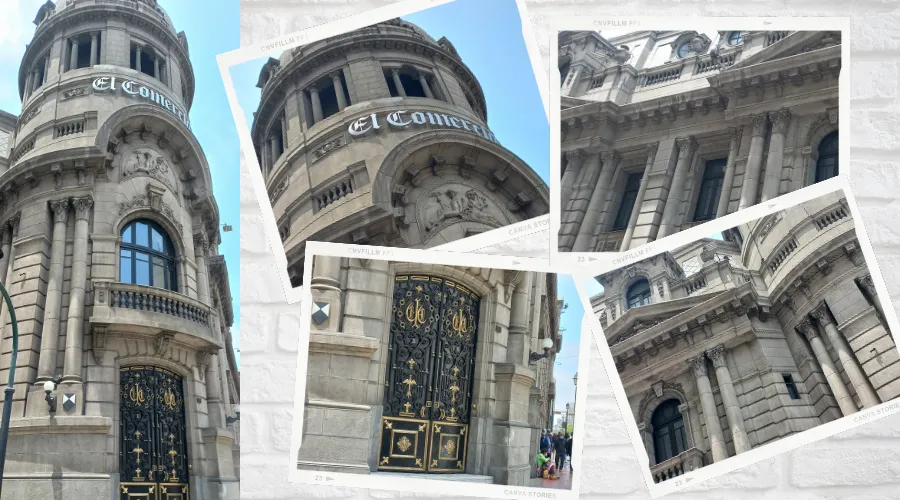

En este sector de la ciudad se encuentran las oficinas del Departamento de Migraciones, por lo que debo ir con frecuencia a actualizar o renovar mi residencia en el país. Además de hacer los tramites y diligencias necesarias, aprovecho la salida para caminar, conocer y tomar muchas fotos a los edificios que me parecen interesantes.
To stroll through the streets of Lima is to travel back in time; it is to marvel at all those huge and imposing buildings. In the business center of the city of Lima are the oldest buildings in the history of the city.
In this sector of the city are the offices of the Department of Migration, so I have to go frequently to update or renew my residence in the country. In addition to doing the necessary paperwork and errands, I take advantage of the outing to walk around, get to know and take lots of pictures of the buildings that I find interesting.

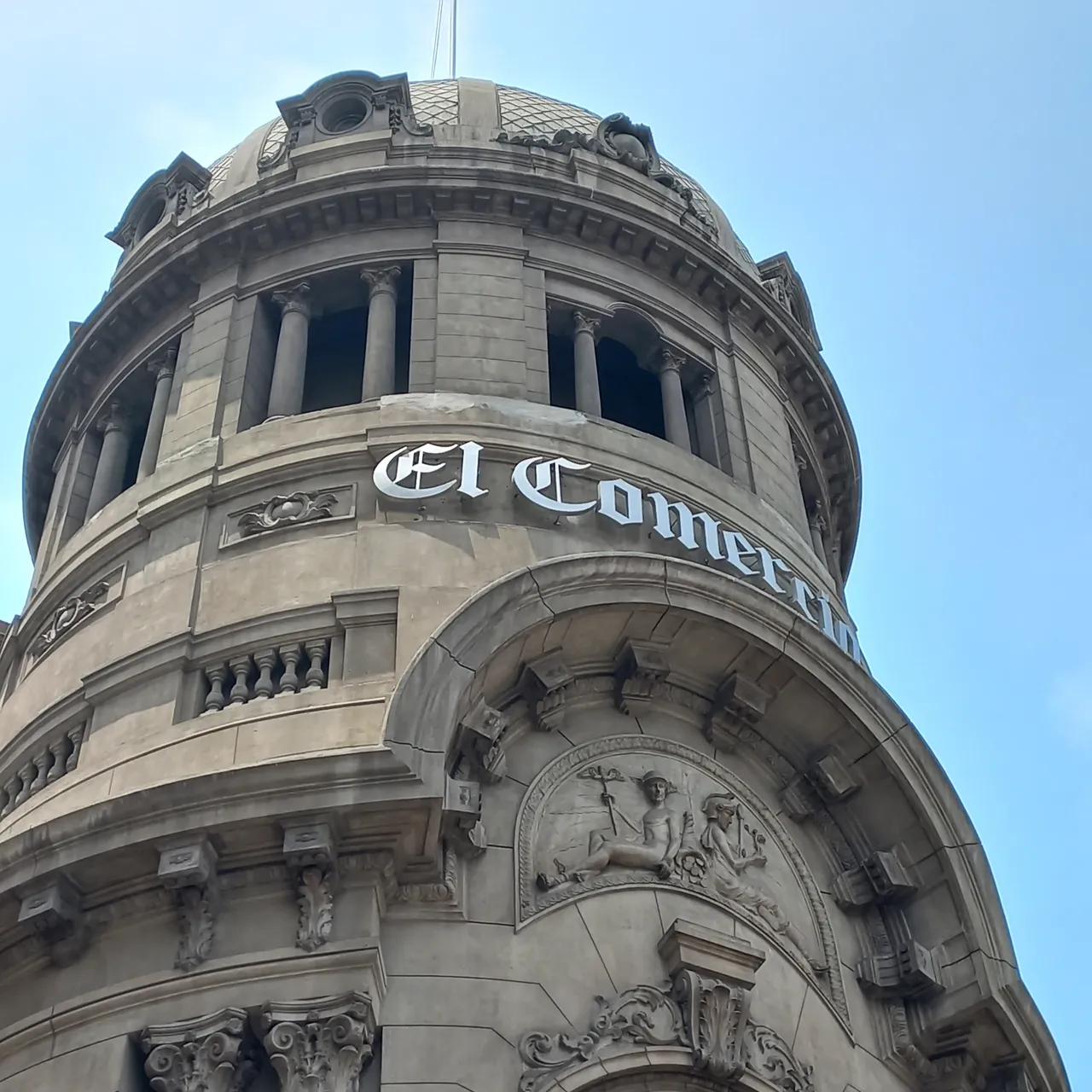
Ocupa toda una esquina y es imposible que pueda pasar desapercibido debido a su gran tamaño y llamativa estructura. Son muchas las personas que transitan las concurridas calles del centro empresarial, ya que en ese entorno se encuentran muchas edificios de oficinas de instituciones públicas.
La mayoría de las personas extranjeras se detienen para admirar los hermosos acabados que presentan estos edificios y tomarse fotografías en la fachada principal.
In this opportunity I share with you a review of the building that serves as the main headquarters of the newspaper "El Comercio". the oldest printed news media in Peru. This emblematic building is also known as "The home of the news". It is located at Av. Antonio Miro Quesada 300 (Jr. Lampa) Lima.
It occupies an entire corner and it is impossible for it to go unnoticed due to its large size and striking structure. Many people pass through the busy streets of the business center, since many office buildings of public institutions are located in this area.
Most foreigners stop to admire the beautiful finishes of these buildings and take pictures of the main façade.
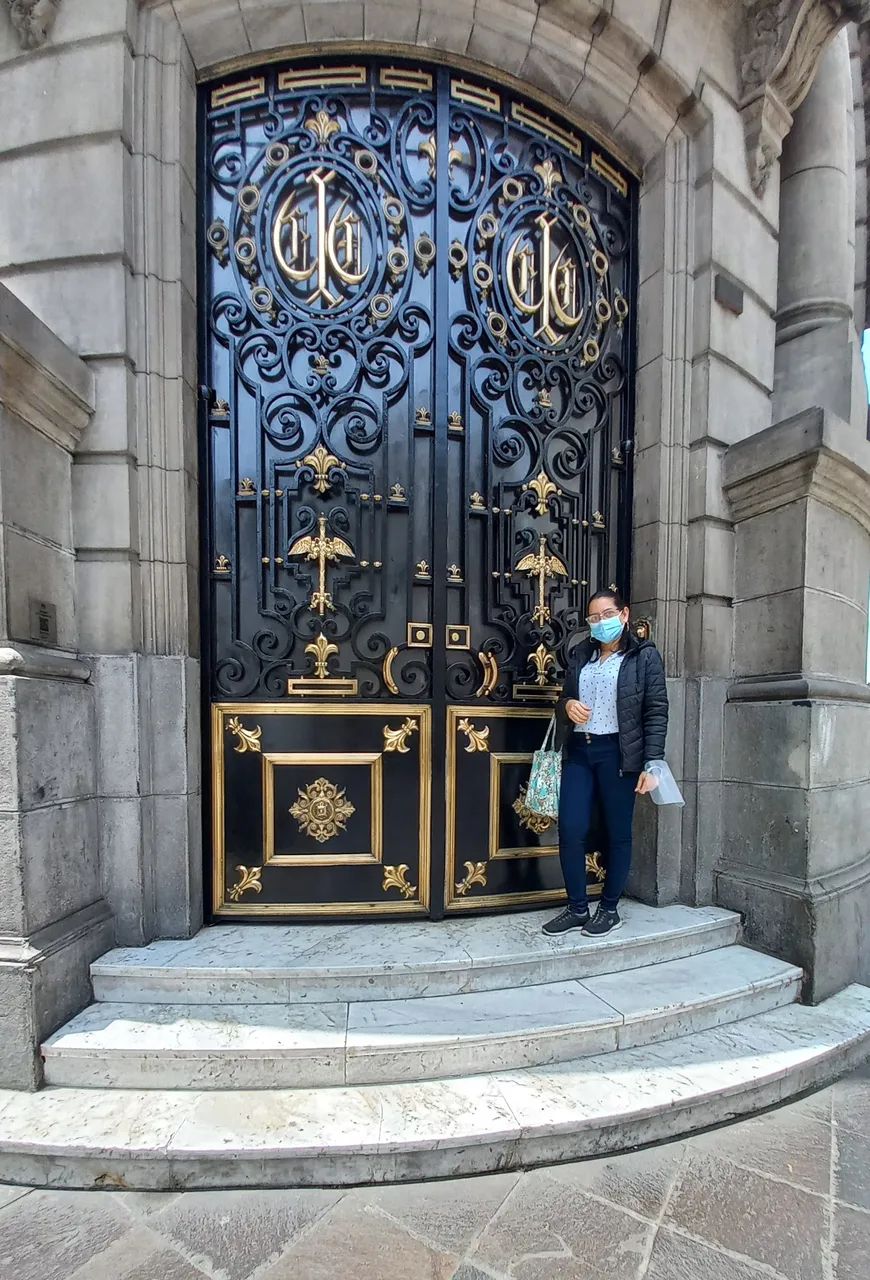

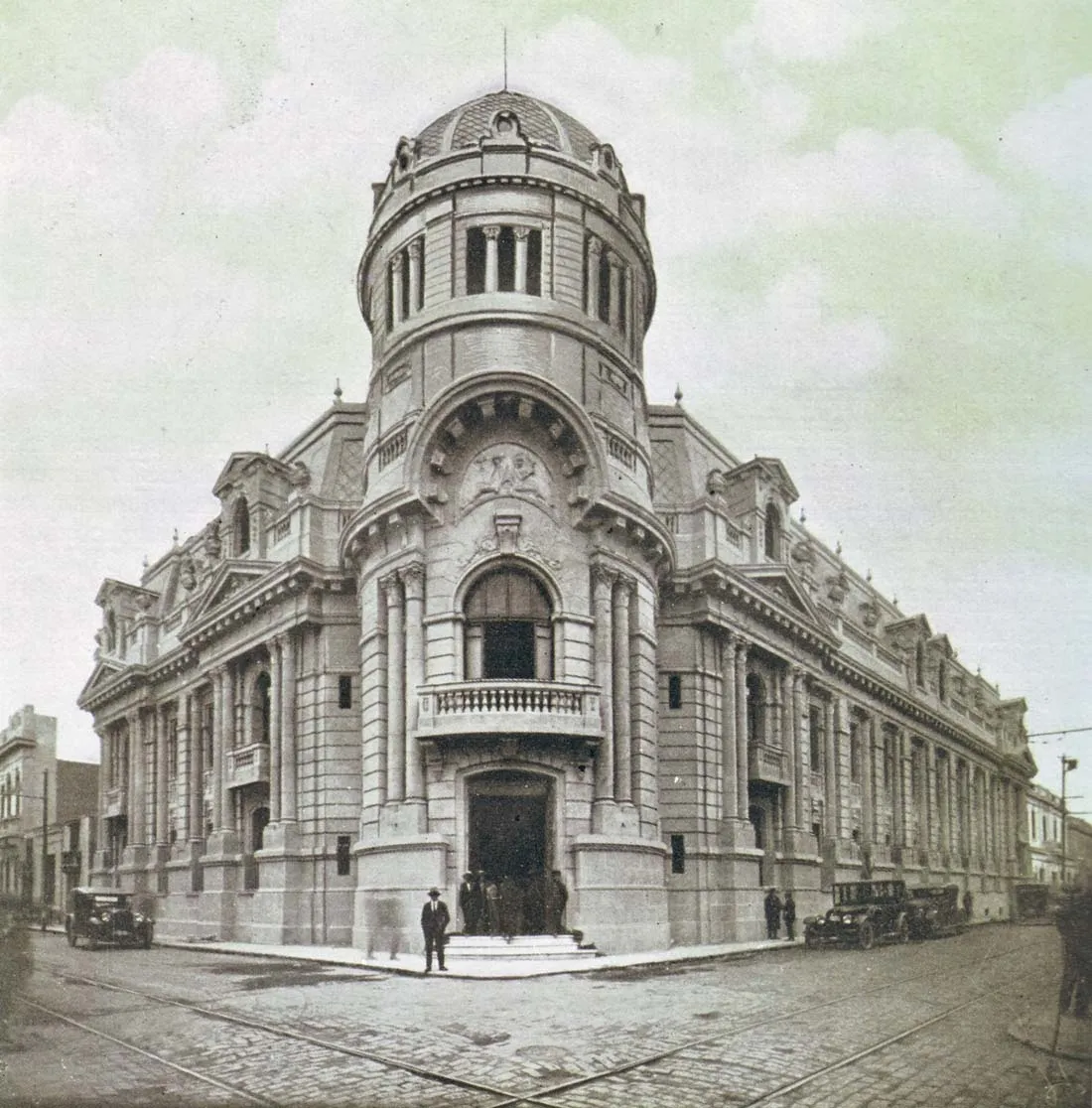
En septiembre de 1919, los dos periódicos más importantes del país sufren un ataque vandálico debido al cambio de gobierno ocurrido en esa época. Por razones meramente políticas, la sede de "El Comercio", que funcionaba en la misma esquina donde se encuentra actualmente, fue atacada e incendiada, pero el aspecto más resaltante de la historia es que los periodistas que laboraban en este diario se resistieron al ataque y defendieron la sede, incluso con sus vidas.
Luego de esta situación, se proponen construir un edificio mucho más grande y con la apariencia de una fortaleza para rememorar estos acontecimientos. No fue tarea fácil conseguir el financiamiento necesario para llevar a cabo dicho proyecto ya que los bancos no querían problemas con el actual gobierno, Sin embargo, después de muchas gestiones, en el año 1921 se da inicio a la construcción de la nueva sede y lo que antes era una vieja casona quedo convertida en este enorme e increíble edificio.
This imposing building that has been "the home of the news for almost 100 years, has a very interesting and transcendental history for journalism professionals in the country. After searching for information on the web and documenting myself to be able to write this post, I was able to learn many interesting details regarding the history of this building, and here is a very brief summary.
In September 1919, the two most important newspapers in the country suffer a vandalism attack due to the change of government occurred at that time. For purely political reasons, the headquarters of "El Comercio", which operated in the same corner where it is currently located, was attacked and burned, but the most remarkable aspect of the story is that the journalists who worked in this newspaper resisted the attack and defended the headquarters, even with their lives.
After this situation, they decided to build a much larger building with the appearance of a fortress to commemorate these events. It was not an easy task to obtain the necessary financing to carry out this project, since the banks did not want problems with the current government. However, after many negotiations, in 1921 the construction of the new headquarters began and what was once an old mansion was converted into this enormous and incredible building.
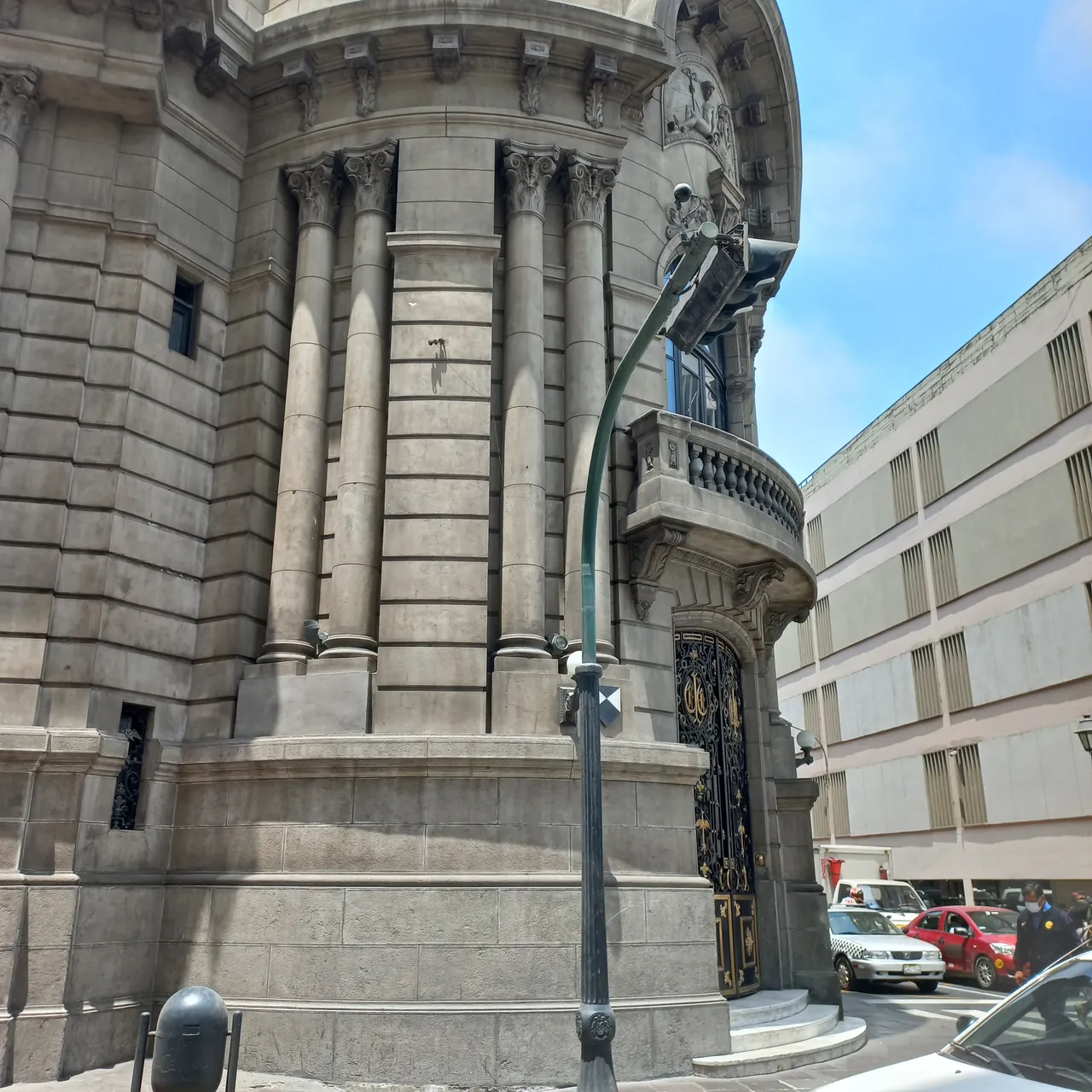

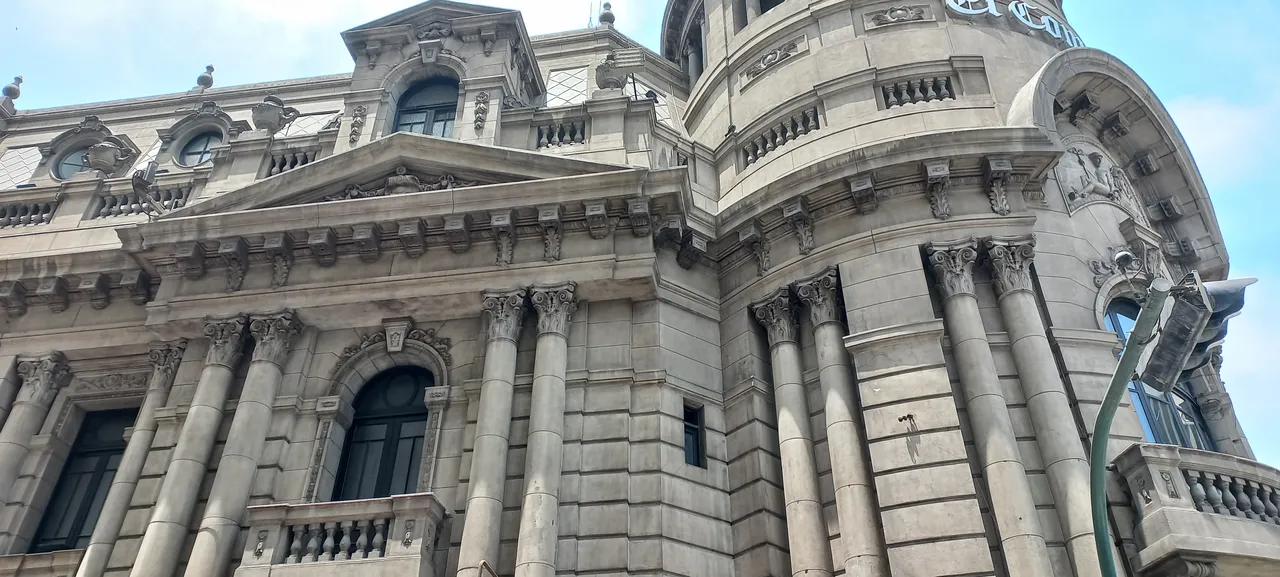
The construction of the building was in charge of the engineers Rivero Tremouille and Gonzales del Riego, both graduated from the School of Engineers of Lima. The project began in 1921 and was completed in 1924. During the three years that the work lasted, the newspaper did not stop being published and the headquarters never moved to another place, everything continued to function while the construction was being carried out.
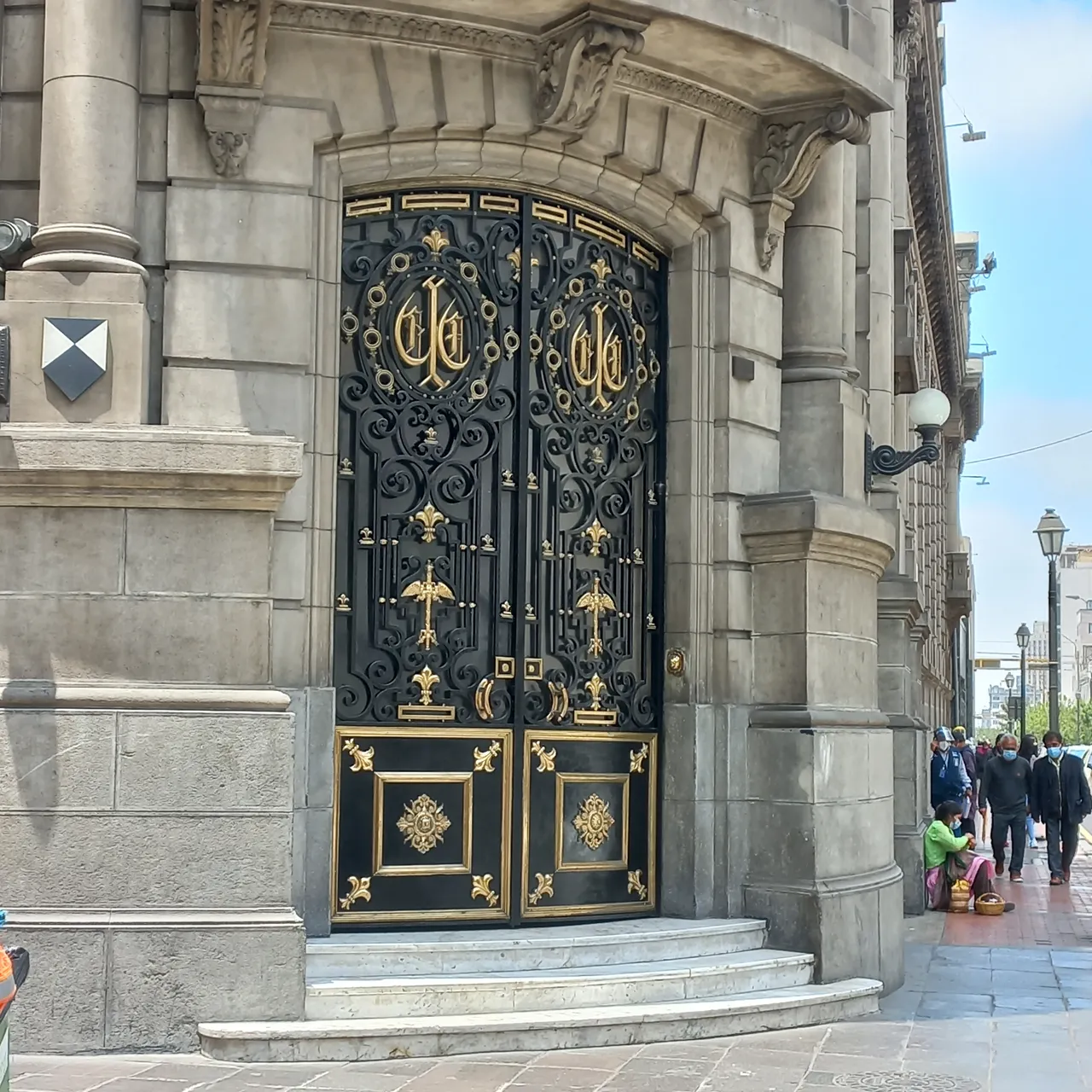
The building has a Neoclassical architectural style, although it reflects a little of the eclecticism that prevailed at the time. It has two huge facades which have three vertical sections, right on the corner is the impressive main door and a dome that exceeds the height of the building. Inside, the rooms are distributed around an axis formed by three main spaces: the hall, the staircase and the offices. The marble floors and stairs were imported from Italy.
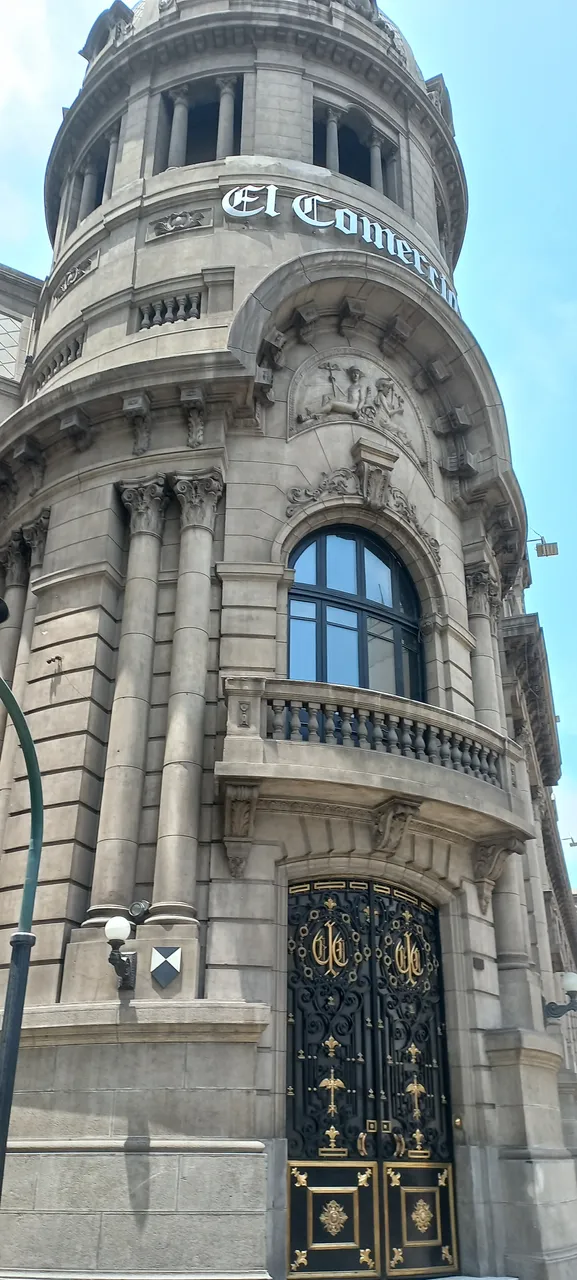
One of the most striking details that I liked the most are the thick iron and bronze grilles with the initials of the newspaper in gothic letters. There are many architectural details that can be analyzed, however, there is too little information on the web to cover them all.
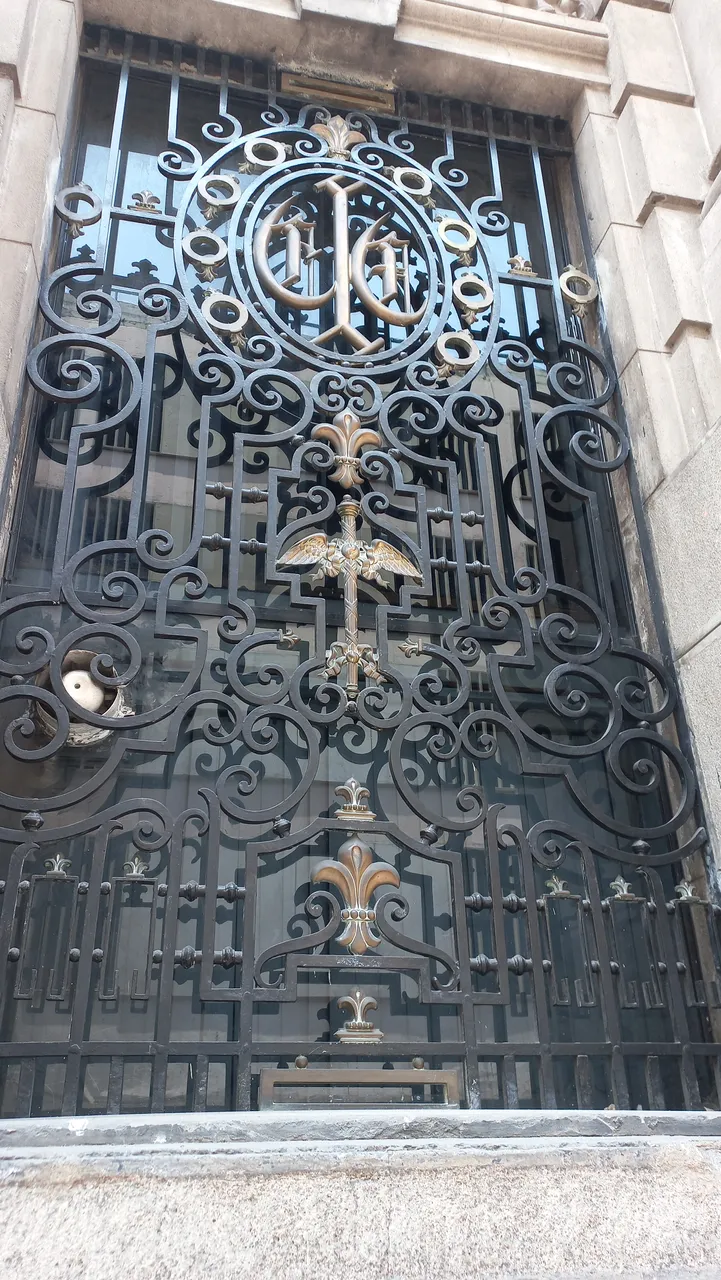

As a curious fact I learned that most of these historic buildings currently have a plaque on their facades in which there is a QR code that can be scanned to access a 2-minute video where a brief overview of the building in question is given. This in order to strengthen and encourage the cultural value of these buildings.
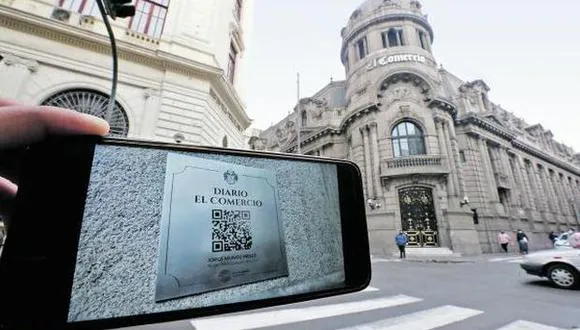

- Todas las fotos fueron tomadas con mi teléfono celular Samsung A32
- Imagen de portada y los separadores de texto son diseñados por mí en con Canva.com
- Uso traductor Deepl
